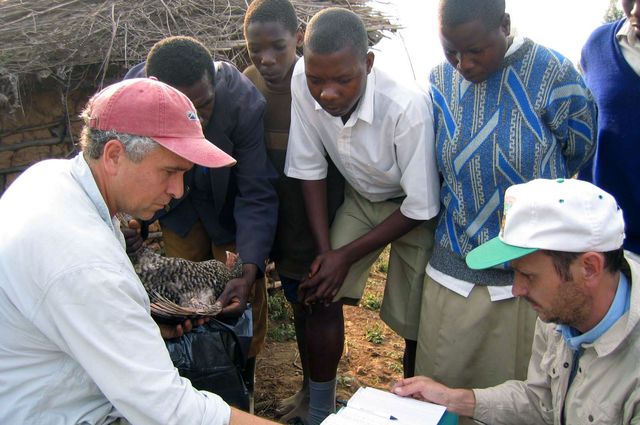You and your colleagues are boldly calling for “prescriptive evolution,” the idea that human beings should consciously shape and direct evolutionary processes. What do you think is the most important problem we need to address in this way? And how would we do it?
There are, in fact, many ways in which the basic principles of evolutionary biology can be leveraged to address challenges in health, agriculture and conservation. For example, a huge problem is the evolution of drug resistance. Most people are aware of the growing concern over antibiotic-resistant strains of disease-causing bacteria. Such strains have evolved because of the overuse of antibiotics, which exert strong selection for resistance. Regulating the use of strong antibiotics or attempting to surpass the adaptive capacity of microbes through drug combinations are both ways to reduce the evolution of these resistant strains. Similar approaches are now being used to treat diseases such as HIV/AIDS. These are hot topics under discussion in the emerging field of evolutionary medicine — but we still have a long way to go.
The American writer Stewart Brand famously remarked that, “We are as gods and must get good at it.” Do you agree? And is this what prescriptive evolution would lead to?
There is some truth to Brand’s statement. Let’s look at threats to biodiversity. The planet recently marked two troubling milestones that anticipate tremendous challenges for the future of biodiversity: The world’s human population surpassed 7 billion, and the concentration of carbon dioxide in the atmosphere rose above 400 ppm [parts per million]. These factors, along with land use changes, are having enormous impacts on plants and animals. As a consequence, we are witnessing a global, but unplanned, evolutionary experiment with the biodiversity of the planet. Unmanaged evolution owing to human activities alters the traits and resilience of existing species, but is rarely tracked or examined for its impacts. We have been managing populations for centuries and have in effect been “playing god” for a long time. We can either choose to manage evolutionary processes or not, but evolutionary change will proceed regardless. Given the immediacy and magnitude of the threats, we believe that meeting these challenges will require new and audacious approaches. This means developing new methods for managing species that leverage our knowledge of evolutionary biology.
How does the future look different in a world managed according to the principles of applied evolutionary biology?
The future looks better — we will be using our knowledge of evolutionary principles to hopefully find solutions to some of the important challenges facing humankind. For example, consider how the implementation of environmental impact studies before major construction and development projects has helped avoid species’ decline and extinction. Along the same lines evolutionary impact studies might prevent or reduce the loss of adaptive variation essential for species to adapt to a changing climate.
How do you respond to people who say, “Don’t mess with mother nature!”? There is a fair amount of public resistance to the idea that human beings can or even should manage life on earth, leaving no room for wild nature.
In fact, humans have been messing with mother nature for a very long time. The average annual rate of loss for animal and plant populations and their habitats is estimated to be 1 percent with two-thirds of the world’s terrestrial land area now devoted directly to supporting human populations, either through agriculture, fisheries, urbanization or infrastructure. I work in some of the most remote regions of the planet and can tell you that human-induced evolutionary changes are impacting every corner of it. Such changes are occurring rapidly, even at the level of a human lifespan, bear huge economic costs and pose serious threats to both humans and the biodiversity of the planet.
What are the most important real risks associated with prescriptive evolution, and how can we best manage them?
Managing risks will be important. This is something we discuss in our recent paper. Basically, mitigating risks will come down to making decisions based on the best possible science. There are several ways to reduce risks. One is limiting the implementation of prescriptive evolution to regions that can be carefully monitored and controlled. At the end of the day, some mistakes may happen, but it is important to emphasize that irrevocable unwanted evolution is taking place now in the absence of any action by us to control it.
This Q&A originally appeared on the Huffington Post on Sept. 13. See UCLA’s related news release, “Man-made evolution is here, and it’s time to control it.”

